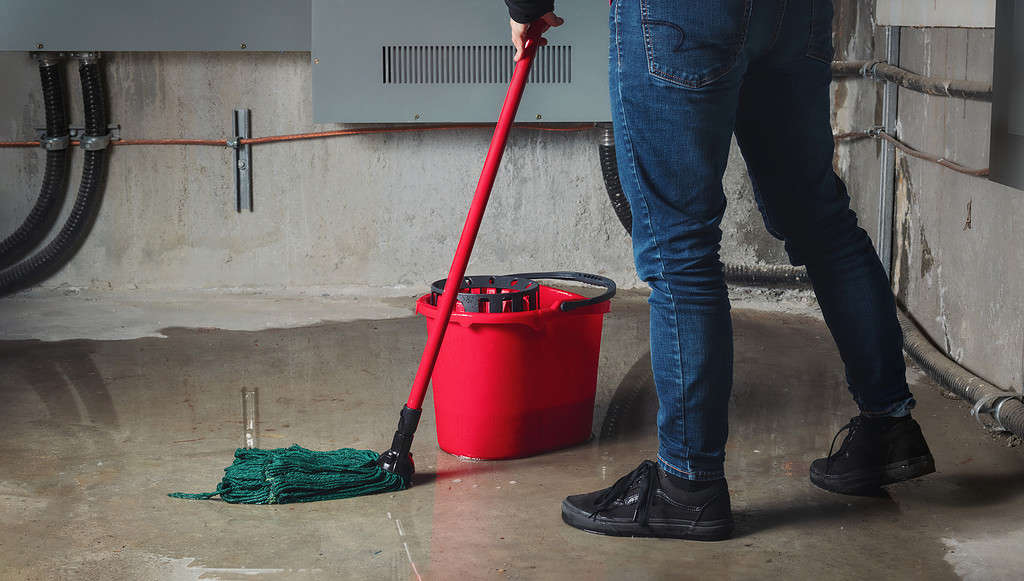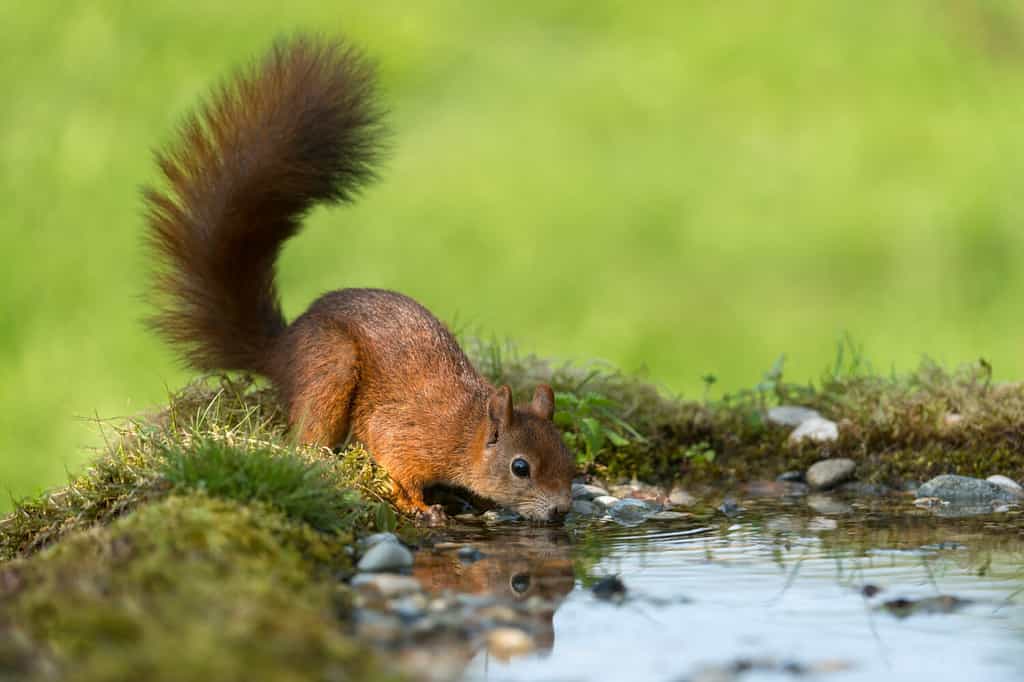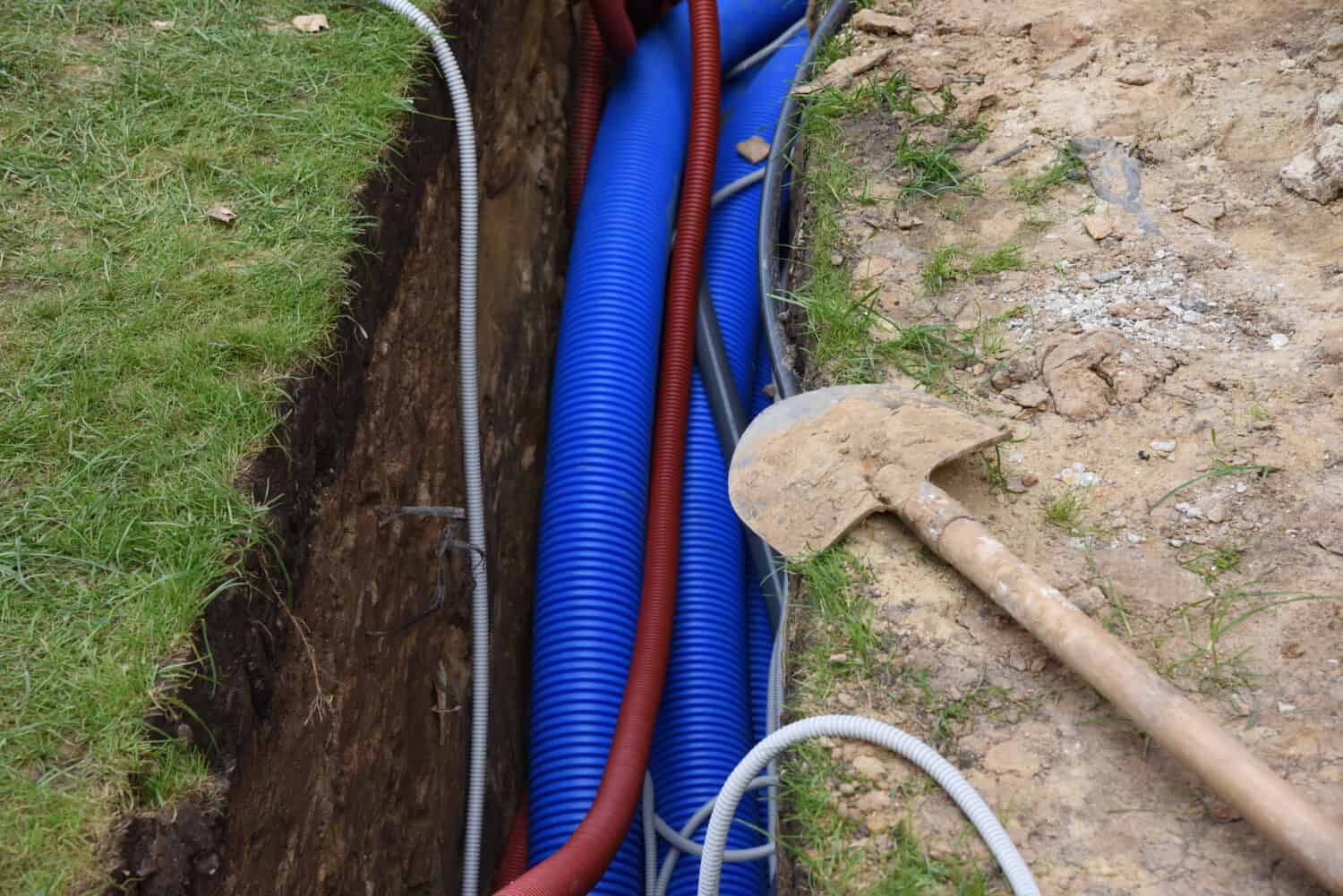When it comes to home ownership, dozens of different issues can arise that beg the question — do I need a French drain? You may have issues with standing water, basement flooding, or something else entirely. French drains may take a day or two to install, but they’re helpful solutions to many water-based home and garden issues. And, they’re not too difficult to install if you follow some straightforward steps.
Ready to drain away the persistent issues in your yard? Keep reading to discover 7 clear signs you need to install a French drain in your yard.
What Is a French Drain?

Place a French drain under the surface of your yard to ferry standing water to another, more appropriate place.
©MARHARYTA MARKO/iStock via Getty Images
French drains are simple trench-based drain systems that direct surface and groundwater away from certain places in your yard to more appropriate draining spots. They consist of a gravel or rock-filled trench, a perforated pipe, and landscaping fabric. You can landscape over the pipe to make it blend into the rest of your yard as long as you don’t put heavy objects over the pipe — thereby creating an obstruction.
Roman Smolevskiy, the owner of A+ Construction & Remodeling in Sacramento, has a formal education in construction. Over the course of his professional journey, he’s encountered numerous homeowners troubled by water-related issues in their yards. Similarly, Rich Mullins is an Indiana-based home expert and business owner with over 25 years of experience. He’s the founder and owner of H2O Plumbing. Both experts sat down with A-Z Animals, lending their expertise to explain the most common reasons a yard or home would need a French drain.
7 Signs You Need to Install a French Drain
Homeowners know when something is off with their home or yard — they’re living it in every day, so it’s easy to tell. The most common reasons homes need a French drain usually have something to do with standing water, water damage, or property value.
If Your Basement Floods

Basement floods from improper drainage systems can result in significant water damage to your home.
©Petra Richli/iStock via Getty Images
One of the first signs you need to install a French drain is the consistent flooding of your basement or underground level when it trains. Poor landscaping or yard drainage remains a common cause of basement flooding. If you have a steep hill in your backyard that leads down to your house and no drainage system in place, or if your landscaping diverts standing water toward the foundation of your home, you may see frequent floods in your basement.
“Basement flooding is a nightmare for homeowners, leading to extensive damage, mold growth, and costly cleanup,” said Mullins. “In many cases, improper yard drainage is a significant contributor to basement flooding. Water has to flow one way or another, so, when rainwater is not diverted away from the foundation, it’ll naturally seep into the basement through cracks and vulnerable points.”
French drains can run around the perimeter of your house at foot level, intercepting the water before it makes its way into your home.
“A French drain acts as a protective barrier against basement flooding. It intercepts water before it reaches your home’s foundation, directing it safely away from the house. This proactive approach ensures that your basement remains dry even in the heaviest downpour,” informed Mullins.
If Your Yard Has Standing Water

Standing water in your yard can invite unwanted pests.
©Wolfgang Kruck/Shutterstock.com
Similar to the improper lawn drainage mentioned above, standing water on sidewalks, yards, and driveways might signal the need for a French drain installation.
“When your yard experiences persistent pooling or standing water, especially after heavy rainfall, it’s bad news. Excess water can saturate the soil, leading to root rot in plants, including your lawn,” Mullins cautions.
Standing water can cause a litany of problems. If left untreated, they can — and will — compound into something more serious and costly.
“Having that much water lying around essentially creates an environment that is conducive to mosquitoes and other pests. Even your house’s foundation is not safe. Without proper drainage, water can also seep into your home’s foundation, potentially causing structural damage and costly repairs,” Mullins continued.
Like a French drain’s application for basement flooding, it will help avoid standing water puddles in your yard by funneling and redirecting the water away from the vital places in your yard.
Mullins agreed. “A French drain is a highly effective solution for mitigating these problems. By channeling excess water away from your yard, it prevents soil saturation, maintains the health of your vegetation, and protects your home’s foundation.”
If Your Hardscaped Elements Have Water Damage

Heavy rains and standing water can damage patios.
©Tuxster/Shutterstock.com
Homeowners with backyards for entertainment spend hard-earned money on landscaping, hardscaping, and furniture to make their outdoor living spaces beautiful. Despite the energy and effort put in, downpours can ruin the beauty and functionality of hardscapes if the proper drainage system fails to work.
Mullins expounded on the point, explaining how heavy rains, standing water, and improper drainage systems negatively affect hardscapes.
“Hardscape elements such as patios, walkways, and driveways enhance the beauty and functionality of your yard. However, poor drainage can lead to the deterioration of these features over time. When water accumulates around these hardscape elements, it will weaken their foundations over time, causing cracks, settling, and costly repairs.”
The cracks can be easy enough to fill on a weekend afternoon, but it’s only a band-aid to the problem. Water can continue to seep into the most porous parts of hardscape, further degrading their integrity. With a French drain, water has a place to go.
“A French drain is instrumental in preserving the longevity of your hardscape investments,” Mullins asserts. “By efficiently redirecting surface water away from patios, walkways, and driveways, it prevents soil erosion and the destabilization of these structures. This not only saves you money on repairs but also ensures that your outdoor spaces remain safe and aesthetically pleasing.”
If Your Lawn Looks Rough

Weeds can grow more in your yard if you allow standing water to settle.
©goldyrocks/iStock via Getty Images
Lawns remain notoriously tricky for homeowners. At times, they’re easy to manage. In fertile or wet seasons like spring, lawns can become unruly with the high-maintenance needs to be fertilized, treated, mowed, aerated, and fed.
If your lawn looks worse for wear, it might not be a situation of cutting the grass too short or allowing pests to infiltrate the soil. Instead, it might be a standing water problem.
“Pooled water can suffocate grass, drown plants, and promote the growth of undesirable water-loving weeds,” said Smolevskiy. “By efficiently channeling this excess water away, a French drain aids in maintaining a thriving and attractive lawn.”
When setting up a drainage system, it might not be easy or the most aesthetically pleasing to extend a pipe far enough away from your plants or grass to the water to travel. As such, some drainage systems elongate the standing water problem instead of solving it. French drains are pretty simple to cover up and landscape so that they blend in with the rest of their environment. Installing a French drain might take your grass from looking marshy to fertile in a matter of weeks, depending on the extent of the problem.
If You Have a Lot of Mosquitos

Mosquitoes only need a tablespoon of water to live or lay eggs.
©jiade/Shutterstock.com
As Mullins mentioned earlier, mosquitoes and other pests like to breed in standing water. Unfortunately, it doesn’t take much water to cause a mosquito problem, either. Mosquito females can lay hundreds of eggs in as little as a quarter inch of water that’s been standing for five days. These larvae then hatch and begin their lives in the water. What does that mean? The swampy, three-foot pool of sludge in your backyard is a veritable oasis in which mosquitoes can breed.
“Stagnant water is a breeding haven for mosquitoes,” confirmed Smolevskiy. “Additionally, consistently damp environments can attract other pests like slugs and create favorable conditions for fungi. On a larger scale, waterlogged grounds can invite burrowing wildlife, such as rodents, which can cause extensive damage to lawns and gardens.
French drains are one of the best solutions to rid your lawn or garden of standing water. Not only does it keep the ground damp; it redirects water to a place that might be better served with it.
“By ensuring the yard remains dry, a French drain significantly reduces these attractions and nuisances.”
If Your Basement Has Mold or Mildew

Mold growth can be an allergen for some people.
©Panchenko Vladimir/Shutterstock.com
Maybe your basement isn’t flooding, but it definitely smells of mold or mildew. This is yet another sign a French drain will come in handy to you.
Mold and mildew, or mild dampness, are two precursors to a basement that has the potential to flood. As such, you need to find the source of the water and stop its path toward your home. In the majority of instances, the water invades from soaking into the soil and foundation of your home — most likely during heavy rains, massive snow melts, or flash floods in the area.
“Dampness adjacent to a home can escalate humidity levels, becoming a hotbed for mold and mildew. By promoting dry conditions, a French drain becomes an indirect tool in preventing these unwelcome growths,” said Smolevskiy.
While flash floods are another challenge to contend with, homeowners can handle snow melts and downpours with a well-placed French drain.
If You’re Getting Ready to Sell Your House

Prepping your home for sale includes making sure your property can withstand heavy rains without flooding.
©Feverpitched/iStock via Getty Images
While not as obvious as the previous six, a seventh sign that you need to install a French drain in your yard is if you’re preparing to sell your house soon.
“Beyond the functional benefits, a well-drained yard, free from the issues of water damage and pest infestations naturally appeals to potential homebuyers, acting as a value addition to the property,” Smolevskiy told A-Z Animals.
Recent studies and surveys of potential homebuyers show homes with yards — especially in suburban and urban areas — are premium assets to a property. According to HomeLight, 26% of buyers said that the desire to have their own yard alone made them want to buy a house.
French drains protect an existing yard and compound value year after year in use. Bella Zinti, a home builder and master gardener who owns The Homey Space, sees decades of use out of French drains that can serve a home long after the original buyer has left.
“It is worth the investment because it can last 30 – 40 years. If properly installed, it increases the resale value of your home because you have shown the prospective buyers that you’ve invested in the proper maintenance to protect your property.”
Your Home and Yard’s Integrity Depends on Drainage
Without proper avenues, water doesn’t know where to go. Standing water can lead to foundation cracks, uncontrollable pest infestations, or a costly basement flood that takes weeks (and thousands of dollars) to fix. By installing a French drain in your yard, you have the opportunity to stop water in its tracks before it causes irreparable damage.
Thank you for reading! Have some feedback for us? Contact the AZ Animals editorial team.








